It’s easy to get off the beaten track in Brittany. This northern French province boasts swathes of natural beauty, including a wild coastline and endless forests. The Breton culture is built on a proud tradition and delicious cuisine, and locals will be more than happy to show and tell you all about their region.
There’s an air of mysticism here, and it’s not hard to believe in Breton magic – you may even see fairies or spirits on your travels! This otherworldly air extends to Brittany’s castles too – from soaring clifftop fortresses to Renaissance palaces. In this post, we’ll show you some of the best and most beautiful castles in Brittany.
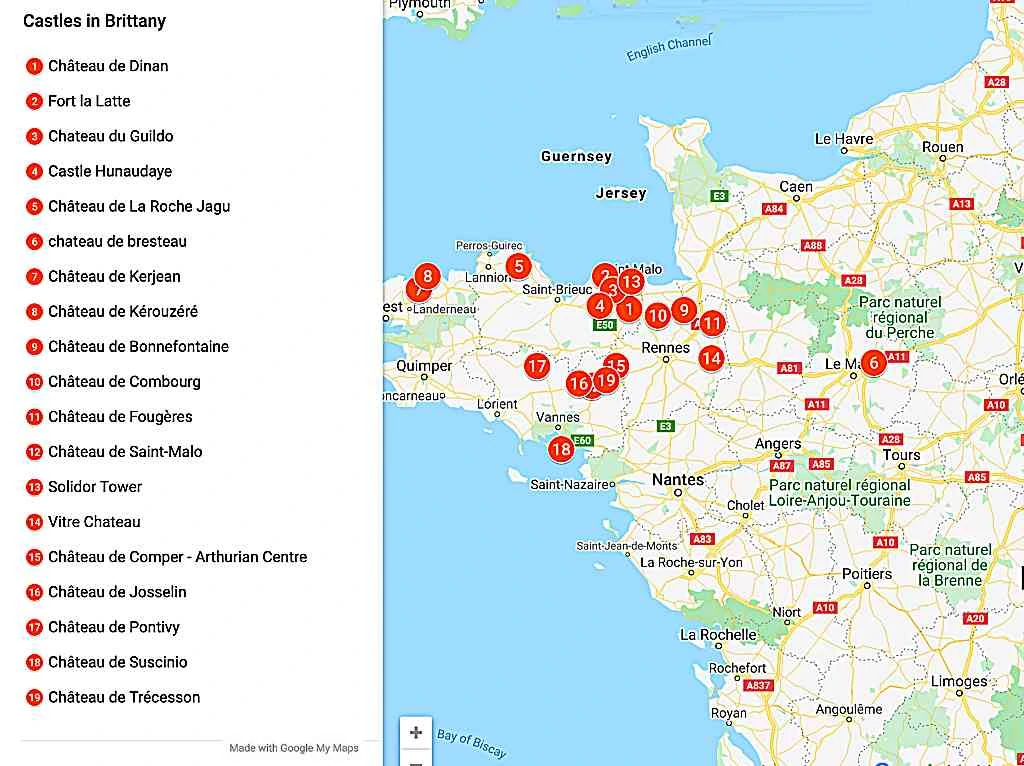
19 Castles to Visit in Brittany
1. Château de Dinan

The keep and gates of the Château de Dinan are part of the medieval ramparts that still surround the old town of the same name. This castle has been standing since the 14th century and was enlarged again in the late 16th century.
Nowadays, you can visit the five-storey castle (which is accessed through a spiral staircase) and walk on the parapet. Château de Dinan doubles as the town museum, and you can get an incredible view of the town from the top of this tower-palace.
Where: Dinan
When: 14th century
Open for Visit: Yes. Check here for more information.
You might also want to check out: The best castles in France.
2. Fort-la-Latte
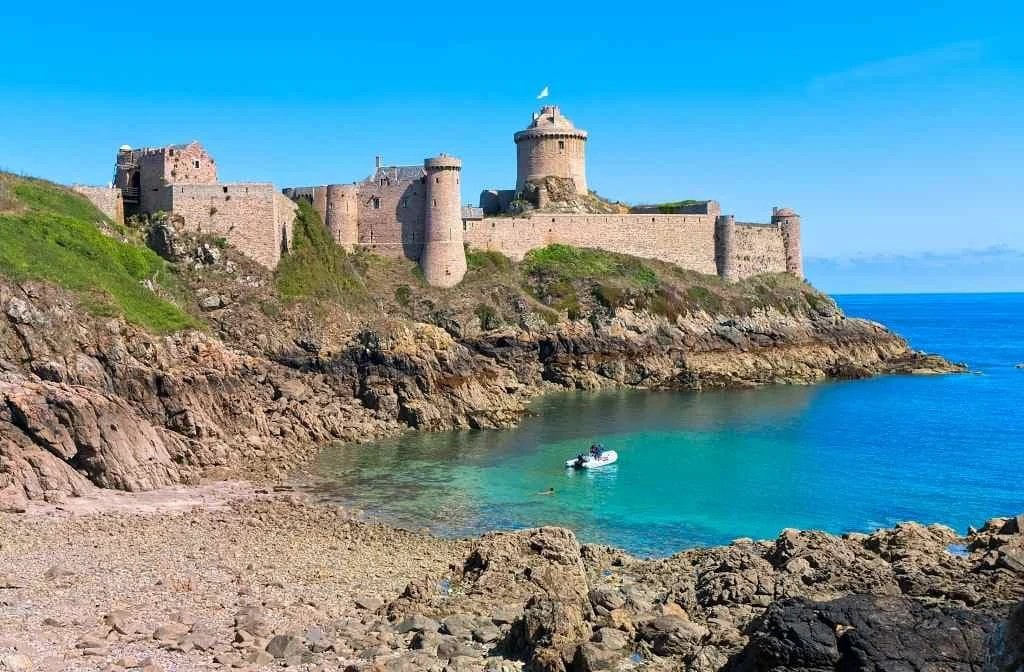
While the opening hours of Fort-La-Latte may be limited, this place is worth heading to for the location alone. In the part of Brittany known as the Emerald Coast along the Bay of St Malo, this imposing fort is one of the top attractions.
Either park on the Cap Fréhel peninsula where it’s based, or take a hike along the Old Customs Officers’ Path before accessing the fort via a drawbridge.
It was originally built in the 14th century but was redesigned in the 17th and restored in the 20th. This breath-taking location means it’s hardly surprising that Fort La Latte has had a starring role in a number of films!
Where: Plévenon
When: 14th century
Open for Visit: Yes. Check here for more information.
3. Château du Guildo
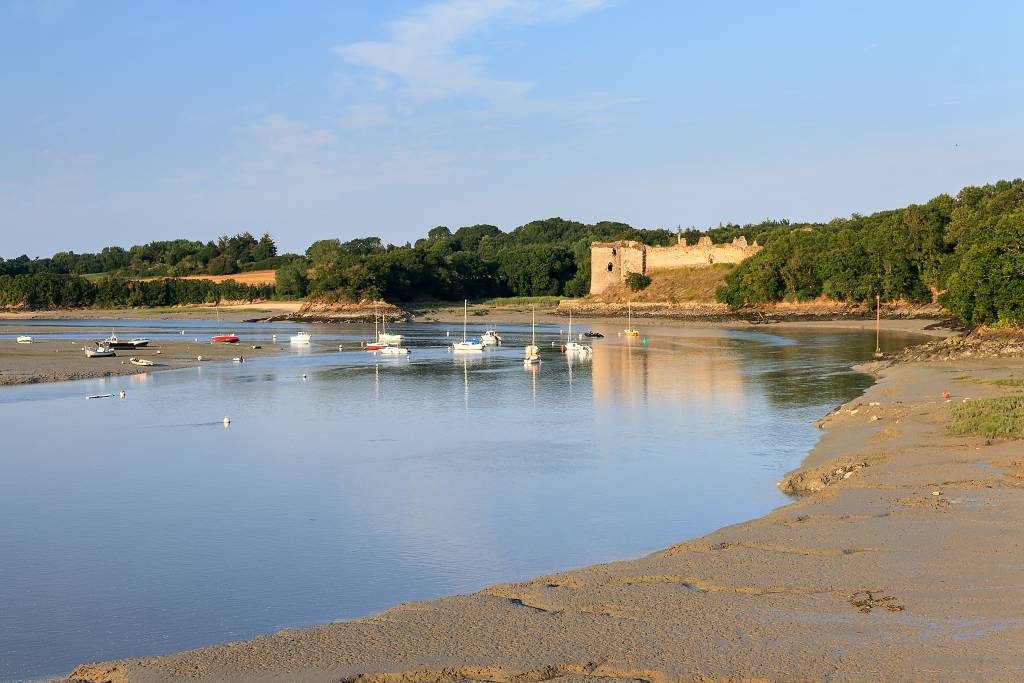
The ruins of Château du Guildo overlook the estuary of the Arguenon River from a rocky outcrop. There is evidence that a building stood here as long ago as the 12th century (most likely a manor), but the ruins that you can still see today probably date back to the 13th century.
The castle has not had a happy past, being destroyed in the mid 14th century then rebuilt. It was subsequently besieged in the 15th century and destroyed again, before being strengthened – then the cycle started again.
After extremely damaging sieges during the French War of Religion, the castle was left to ruin. Nowadays, you can explore the ruins freely and enjoy the views over the estuary.
Where: Saint Jacut de la Mer
When: 12th – 14th century
Open for Visit: Yes, check here for more information.
4. Château de La Hunaudaye
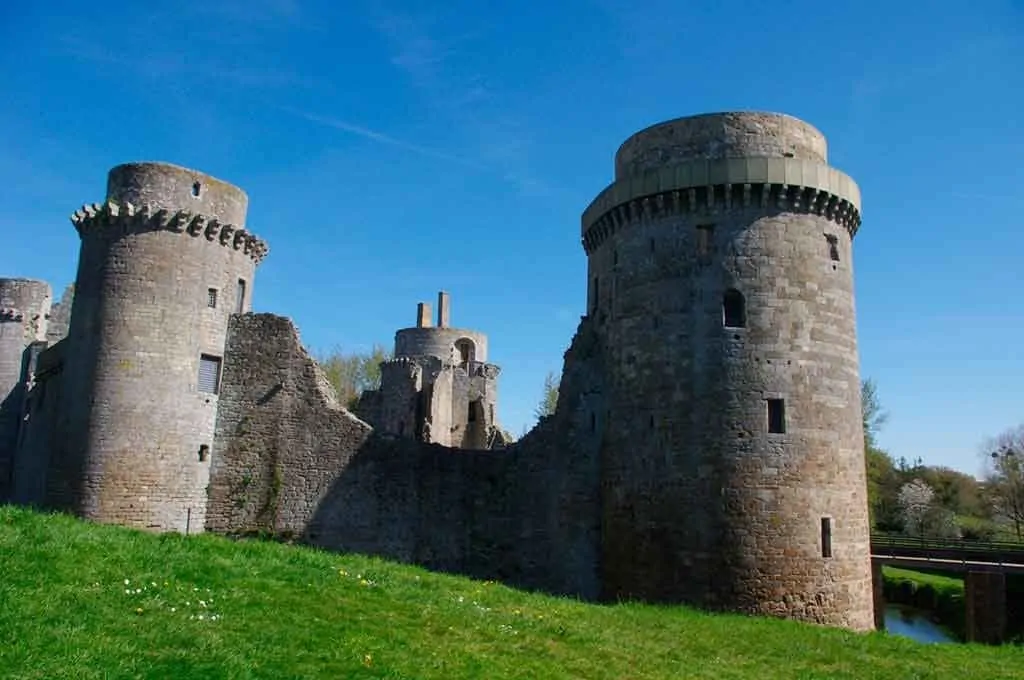
Château de la Hunaudaye is thought to date back all the way to 1220 but was destroyed only 121 years later in the War of Brittany Succession. The castle is unique as it has an irregular pentagonal plan, with five towers connected by a continuous curtain wall.
Unusually for a castle, there is no dungeon. However, there is a moat and a drawbridge. Despite much of the castle being restored, it has been left open to the elements as there is no roof.
Where: Plédéliac
When: 13th – 15th century
Style: Château fort
Open for Visit: Yes: Check here for more information.
5. Château de La Roche-Jagu

There were once ten fortresses in the valley through which the Trieux River flows, but Château de la Roche-Jagu is the only one left standing, guarding the river port of Pontrieux. Initially, it was much larger, but is still an imposing building today – just count the ten chimneys.
The château is surrounded by gardens organised around a 300-year-old oak tree. It’s possible to take a steam train journey along the Trieux Estuary if you want to see more of the area surrounding this eccentric Breton castle.
Where: Ploëzal
When: 15th century
Style: Medieval/Gothic
Open for Visit: Yes.
6. Château de Brest
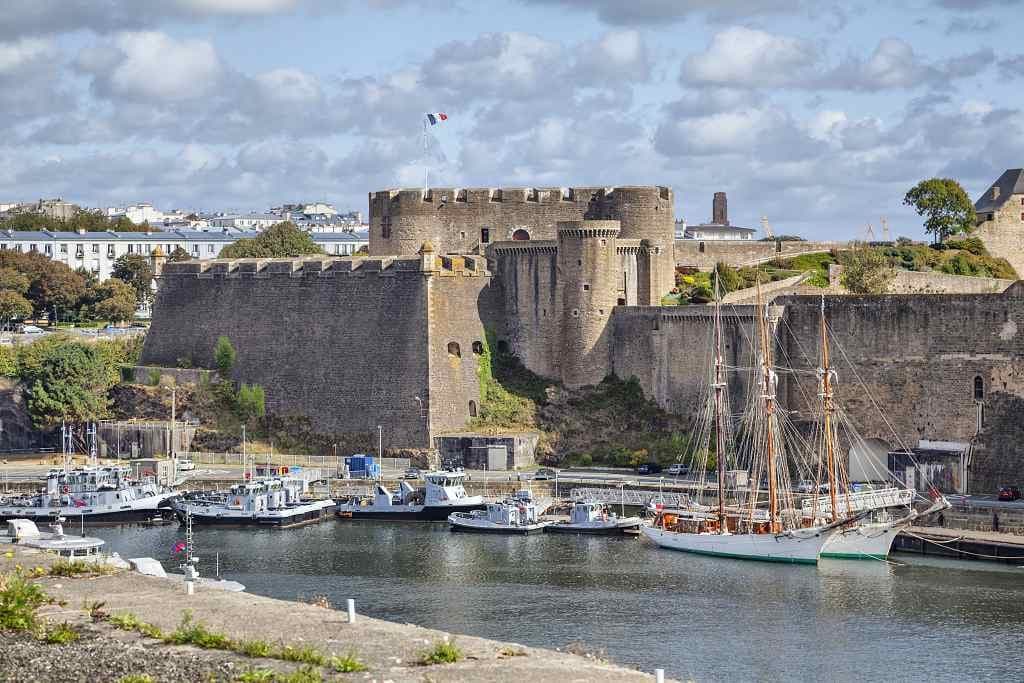
An unmissable castle in Brittany, the Château de Brest is the oldest castle in the world that is still in use. It sits at the mouth of the River Penfield and is at the heart of one of the largest roadsteads in the world.
Over the years, the castle has been inhabited by Romans, the counts of Leon, and enabled the city to become a true military port when it was Vauban’s citadel. Nowadays, it retains its nautical theme as home to the city’s maritime museum.
Where: Brest
When: Earliest evidence at the end of the 3rd century
Style: Citadel
Open for Visit: Yes. Check here for more information.
7. Château de Kerjean

This manor house is close to the town of Saint-Vougay in the Finistère department of Brittany. It took around 50 years to complete this Renaissance building, which is also a stronghold.
Learn about the castle’s history with a number of exhibits, models, and even characters in period costume. As well as being impressed by the contents of the castle, there are 19 acres of grounds waiting to be explored.
Where: Saint-Vougay
When: 16th century
Open for Visit: Yes. Check here for more information.
8. Château de Kérouzéré
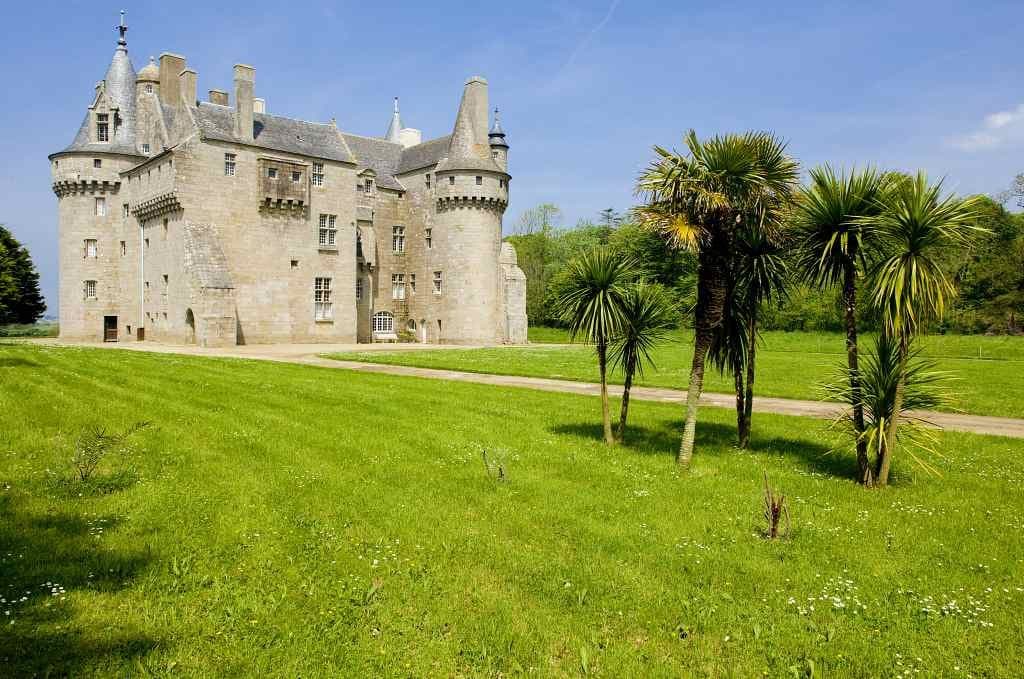
This granite manor house was built in the first half of the 15th century in a location that left it dangerously exposed to English attacks. It was besieged again in the French Wars of Religion at the end of the 16th century, with a large section of the castle being destroyed, only to be rebuilt later.
The castle overlooks a lawn and garden with many flowers. The castle is free to visit year-round, although opening times are not clear.
Where: Sibiril
When: 15th century
Open for Visit: Yes, check here for more information.
9. Château de Bonnefontaine

Right on the border between Normandy and Brittany, Château de Bonnefontaine lies on the banks of the Couesnon River. It is a Renaissance castle with a number of towers and a granite façade that have been added and updated over the years.
There’s also an English park landscaped in the 19th century by Denis Bülher. This historic monument hosts events such as weddings and family and corporate events in its Orangery opposite the castle.
Where: Antrain
When: 16th century
Open for Visit: The castle is open for weddings and events throughout the year. Check here for more information.
10. Château de Combourg

Château de Combourg was built to defend the Dol Cathedral and Brittany’s independence, before having an English style park added later on. Like the park in the Château de Bonnefontaine, this was designed by the Bühler Brothers.
This castle is also known as the birth of French writer and politician François-Rene de Châteaubriand. The writer’s spirit is said to still haunt the castle.
Where: Combourg
When: 11th century
Open for Visit: Yes, check here for more information.
11. Château de Fougères
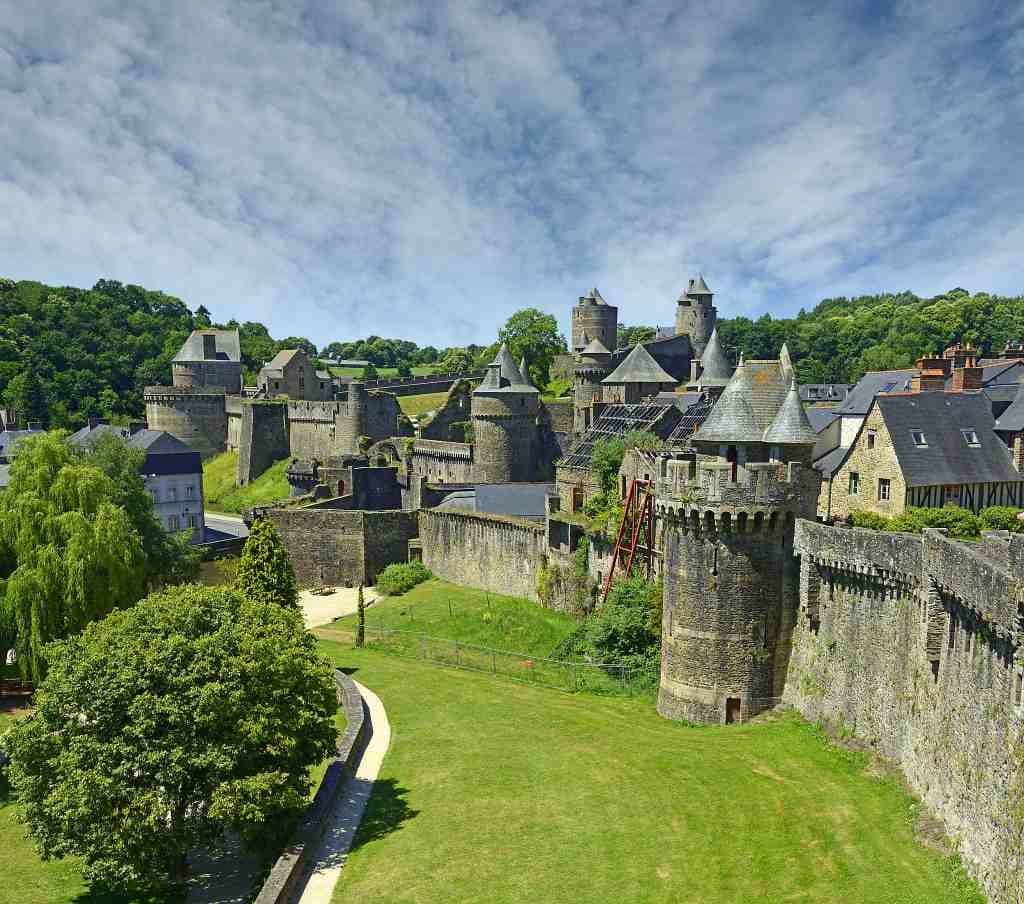
One of the oldest castles in Brittany, Château de Fougères is in the north-eastern corner of Brittany and is located at the crossroads of several trade routes.
Despite some power struggles over the subsequent years, the castle is very well preserved, and it withstood many sieges in the middle ages. The town has made up part of the Tour de France routes in recent years, with the route passing the castle.
Where: Fougères
When: 12th century
Open for Visit: Yes. Check here for more information.
12. Château de Saint-Malo

This lookout style castle was built by the Dukes of Brittany in the 15th and 16th centuries, and it might just boast the best views in town from its tower. The castle is unusual in that the horseshoe-shaped Grand Donjon is not attached to the ramparts.
Saint-Malo has a long history of piracy, so aside from the castle, the city is interesting to visit to learn about that swashbuckling past. The castle is now home to Saint-Malo’s History and Ethnography Museum.
Where: Saint-Malo
When: 14th century
Open for Visit: Yes.
13. Solidor Tower
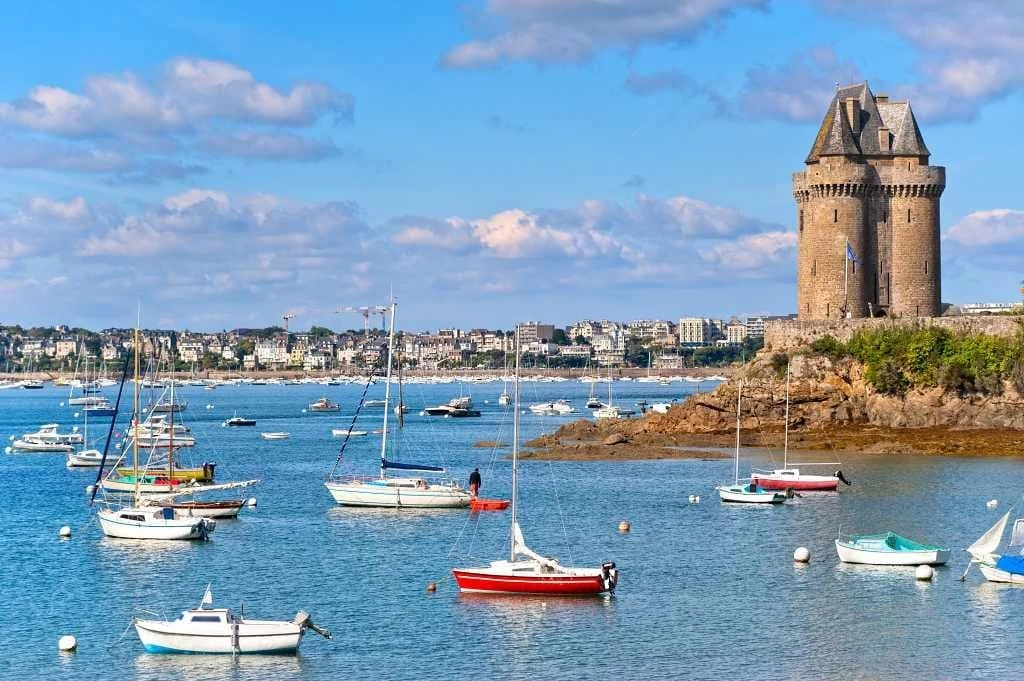
Another unmissable monument in Saint-Malo, the Solidor Tower overlooks the Rance Estuary. It was used as a prison in the French Revolution, with its strong curtain walls making it impossible to escape.
It wasn’t always used as a prison, though: initially, it was designed so that the town of Saint-Malo could control the river and estuary. Nowadays, visitors can enjoy a spectacular view of Saint-Malo bay from the tower.
Where: Saint-Malo
When: 14th century
Open for Visit: Yes.
14. Château de Vitré
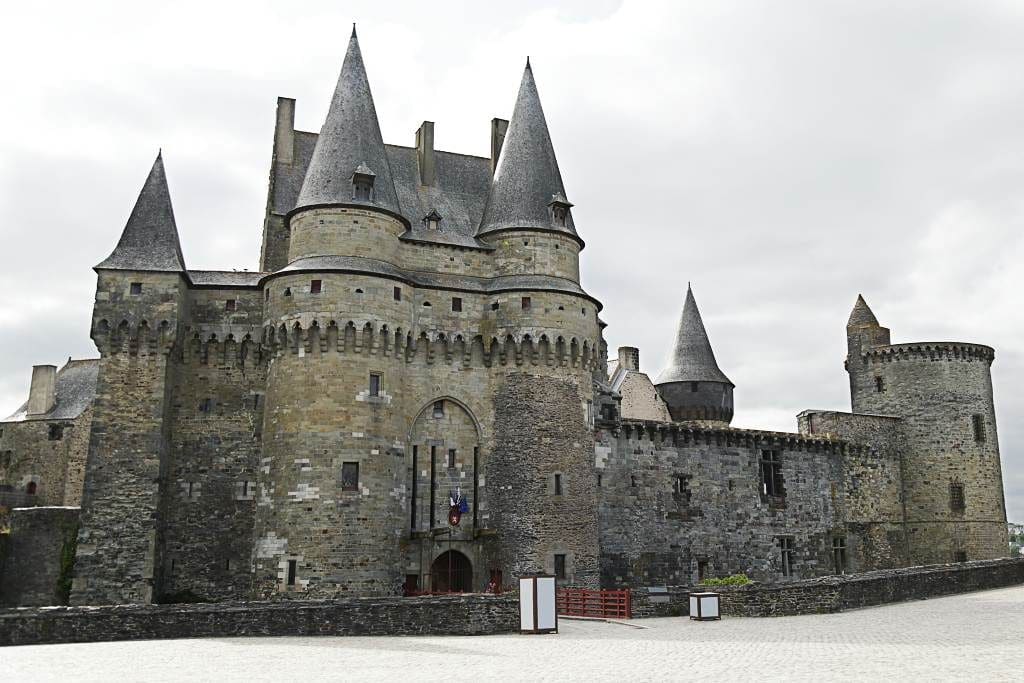
The earliest incarnation of Château de Vitré was built in 1060 before Normandy conquered the United Kingdom! It was built of wood but was burned down.
The castle that you can see today is mostly from the 14th and 15th century, with some later adornments added. One of the most impressive castles in Brittany, Vitré’s castle looms over the town and the River Vilaine from an outcrop.
Where: Vitré
When: 11th century
Open for Visit: Yes. Check here for more information.
15. Château de Comper
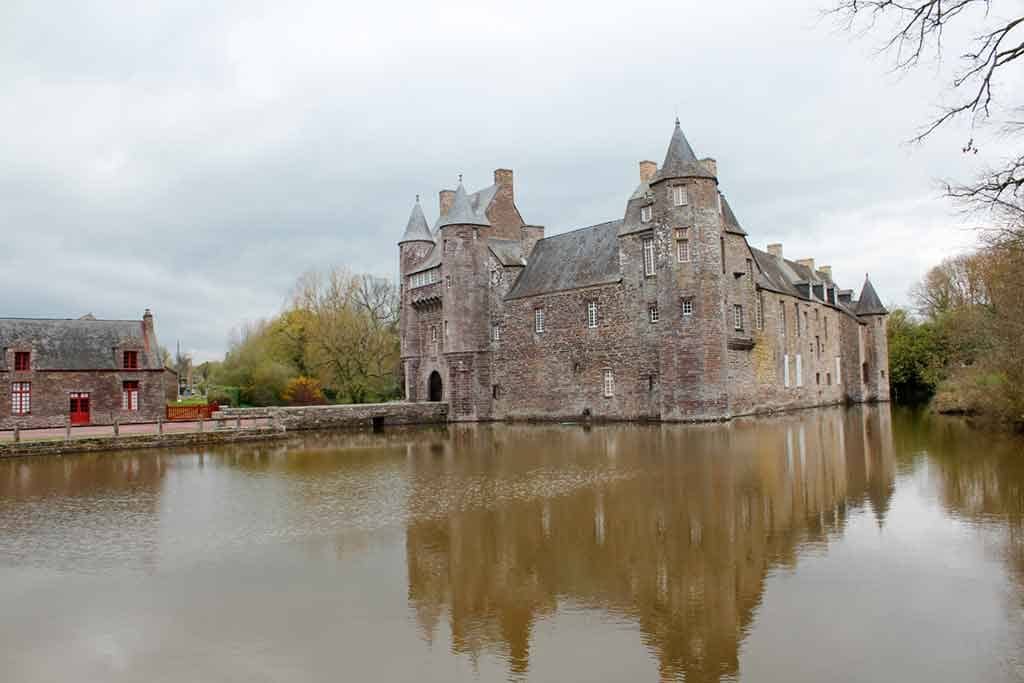
Deep in the Paimpont Forest by Lac Diane, Château de Comper is now the Arthurian Centre – the imaginary of Broceliande enchants the public with tales of the Celtic world and medieval literature.
Early mentions of the castle go back to the 9th century, said to be the property of the Breton King Salomon in the 9th century. It was said to be one of the strongest castles in the region in the 13th century, but in 1598, it was dismantled. It was rebuilt in the 19th century.
Where: Concoret
When: Rebuilt in the 19th century
Open for Visit: Yes, check here for more information.
16. Château de Josselin
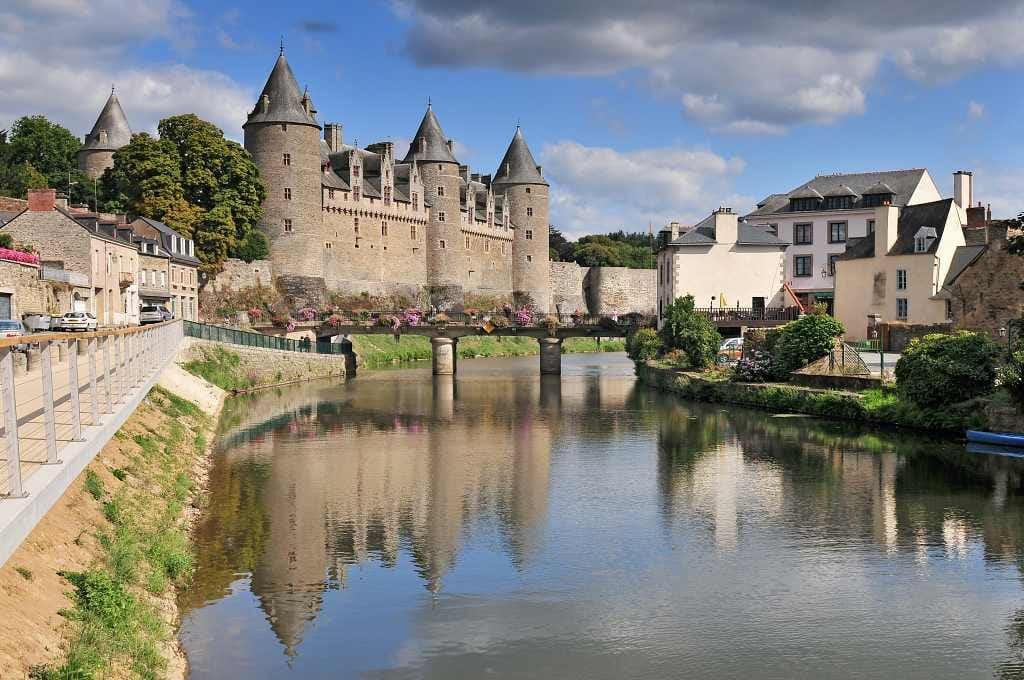
The Medieval Castle of Josselin sits alongside the River Oust and has been the seat of the Rohan family for centuries. The castle boasts a range of attractions from different periods, including a 16th-century fireplace, a 17th-century library with more than 3,000 books, and a 19th-century dining room.
There are beautiful landscaped French Gardens, in which a medieval festival is held every summer.
Where: Josselin
When: 14th century
Open for Visit: Yes, check here for more information.
17. Château de Pontivy
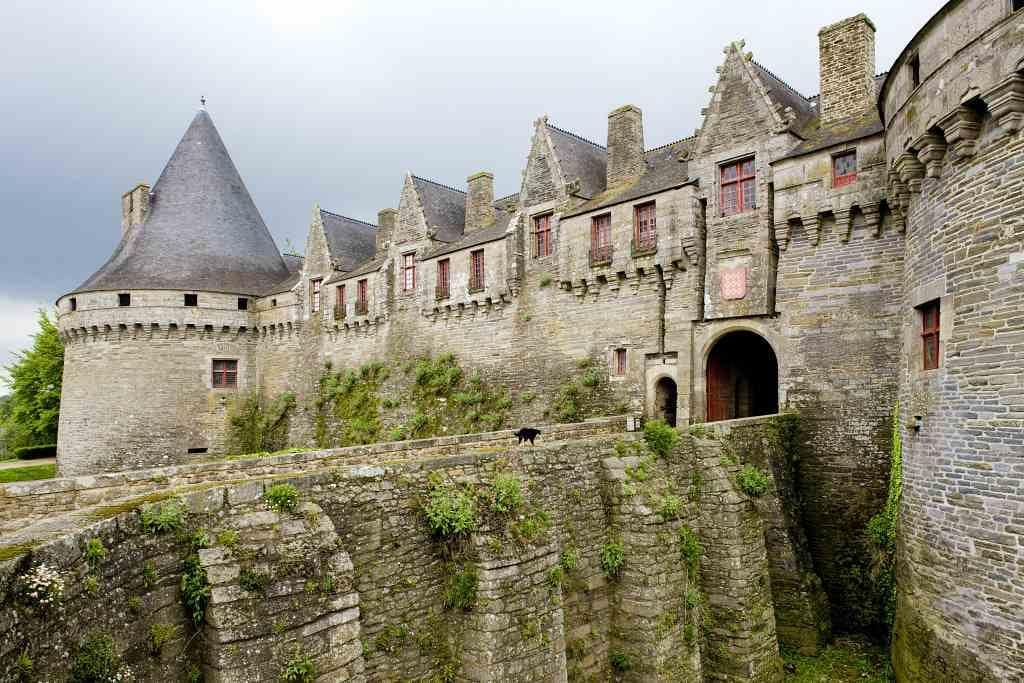
Also known as the Castle of Rohan Dukes, the Château de Pontivy is one of the last fortifications that was built in Brittany. It has an intriguing place in recent history too, as it’s where the Breton National Party attempted to declare independence in 1940. A castle stood earlier than the one you can see now, but it was destroyed by the English in the War of Succession in 1342.
Where: Pontivy
When: 15th century
Open for Visit: Yes, check here for more information.
18. Château de Suscinio
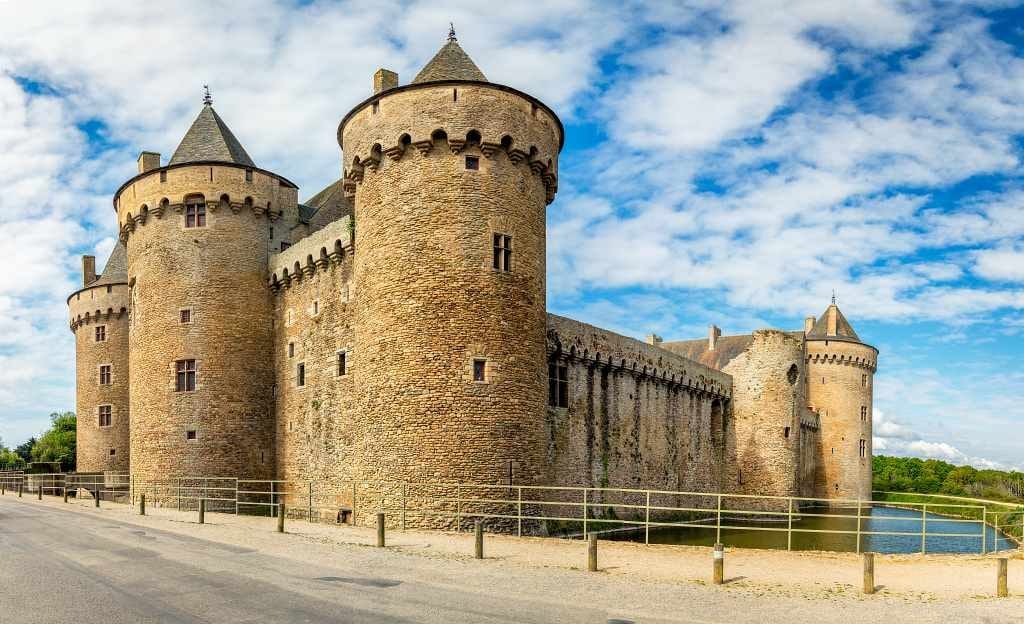
This imposing castle is located near the Atlantic Ocean on the Rhuys Peninsula. It was a former hunting lodge of the Dukes of Brittany, and home to exiled Henry Tudor during the War of the Roses.
It fell into disrepair in the 16th century but was restored again in the 1960s. Visitors can learn more about the castle on guided tours in the summer months of July and August.
Where: Sarzeau
When: 13th – 15th century
Open for Visit: Yes. Check here for more information.
19. Château de Trécesson

While the Château de Trécesson has an interesting history, it’s bound to be the ghostly tales and legends that grab your attention. It stands on the edge of the Brocéliande Forest and is said to be the home of the White Lady.
A young bride who was thrown into a grave and buried alive is said to haunt the castle’s roof under the light of the full moon. There are also said to be ghostly card players in the castle at night. Perhaps it’s a good thing the castle isn’t open for the public to visit…
Where: Campénéac
When: 15th century
Open for Visit: No
